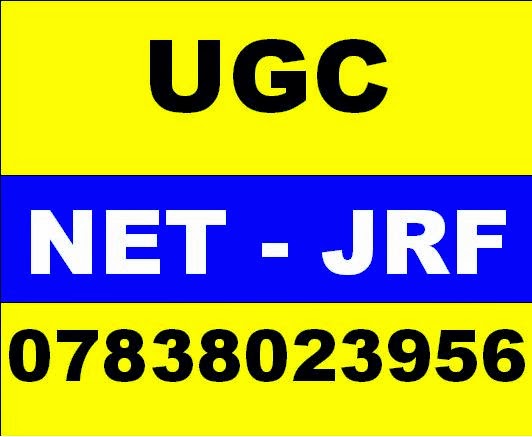Machine Readable Cataloguing (MARC):
MARC format has become a generic term to all MARC formats including UKMARC,
CANMARC, InterMARC, etc. which are used for the identification and arrangement
of bibliographical data for handling by computer.
B) Advantages of Using MARC:
c) Distribution of MARC tapes to the receiving libraries avoid duplication of effort.
d) Uses of MARC tapes make different library softwares compatible to one another.
e) MARC tapes can be used for computerized SDI services.
f) MARC tapes perform sharing of bibliographical information.
The first
conference on Machine Readable Cataloguing was sponsored by the Library of
Congress. The committee on Automation of the Association of Research Libraries
(ARL) and Council of Library Resources (CLR) was met at the Library of
Congress. This conference recommended that
i) MARC records should include
additional information to be used as multipurpose records, in addition to
information available on printed card;
ii) The element of MARC data
should be standardized;
iii) MARC records should be
produced and distributed to libraries which have automated system.
In
the second conference held at the Library of Congress in November 1965, Library
of Congress sought funds from CLR and in December 1965 it received a grant to
conduct a pilot project.
In early January
1966 the planning for the pilot project began. The third conference was held in
February 1966 at the Library of Congress which was considered the official
opening of the pilot project for machine readable cataloguing data. The pilot
project was called MARC I. In this way the MARC I format was set up in April
1966 which was restricted to books only. The distribution of regular weekly
service of MARC tapes started from Nov. 1966. The MARC I format was based
entirely on the structure of the Library of Congress catalogue card. So, BNB
(with active collaboration with Library of Congress) made some operational
changes to make it interchangeable record format. As a result, MARC II was
developed. It is capable of containing bibliographic data of all forms of
library material such as books, monographs, serial, map, music, etc. By
subscribing to this service a library can acquire Magnetic tapes in machine
readable form.
Due to the
differences between the British Library and the Library of Congress MARC II was
later split into two formats - BNB MARC (later UK MARC) and US MARC. The USMARC
format becomes the U. S. National Standard in 1971 (ANSI Z39.2) and an
International Standard in 1973 (ISO 2709). The MARC II also influenced the
other countries to develop their own standard format which followed the same
structure but the tags were slightly different. As a result, certain amount of
incompatibility exists among the different countries. To solve this problem
IFLA launched a programme known as UNIMARC, but eventually it failed.
A) Structure of MARC Tapes
a) Leader: It provides
information about ensuring such records as total length of the record, the type
of record, etc. It is 24 characters (00-23) long.
b) Record Directory: It
shows what variable fields are in the record and what their locations in the
record are. It is of 12 characters long.
c) Variable Field: The variable fields are of two types- Variable
Control Field (001-009) and Variable Data Field.
B) Advantages of Using MARC:
a) MARC tapes can be used by
individual libraries for producing their conventional card catalogue / book
form of catalogue, etc.
b) It helps in the creation of centrally prepared catalogue.c) Distribution of MARC tapes to the receiving libraries avoid duplication of effort.
d) Uses of MARC tapes make different library softwares compatible to one another.
e) MARC tapes can be used for computerized SDI services.
f) MARC tapes perform sharing of bibliographical information.
“ugc”
“net”
“ugc net”
“net exam”
“net entrance”
“net jrf”
“net jrf”
“ugc net syllabus”
“ugc
net jrf entrance exam coaching classes institute”
“ugc net jrf computer science exam coaching”
“ugc net jrf commerce exam coaching”
“ugc net jrf management exam coaching”
“ugc net jrf economics exam coaching”
“ugc net jrf mass communication exam coaching”
“ugc net jrf education exam coaching”
“ugc net jrf history exam coaching”
“ugc net jrf psychology exam coaching”
“ugc net jrf hindi exam coaching”
“ugc net jrf political science exam coaching”
“ugc net jrf human resource exam coaching”
“ugc net jrf library & information science exam coaching”
“ugc net jrf computer science exam coaching”
“ugc net jrf coaching exam coaching”
“ugc net jrf computer science exam coaching”
“ugc net jrf commerce exam coaching”
“ugc net jrf management exam coaching”
“ugc net jrf economics exam coaching”
“ugc net jrf mass communication exam coaching”
“ugc net jrf education exam coaching”
“ugc net jrf history exam coaching”
“ugc net jrf psychology exam coaching”
“ugc net jrf hindi exam coaching”
“ugc net jrf political science exam coaching”
“ugc net jrf human resource exam coaching”
“ugc net jrf library & information science exam coaching”
“ugc net jrf computer science exam coaching”
“ugc net jrf coaching exam coaching”
“ugc net jrf study material”
“ugc”
“ugc”
“net”
“ugc net”
“net exam”
“net entrance”
“net jrf”
global teachers academy
D-2, Arjun Nagar Safdarjung Enclave, New Delhi
Near Green Park Metro Station
Ph. 078-380-239-56 , 078-380-243-65
http://www.gtah.net/
“net jrf”
global teachers academy
D-2, Arjun Nagar Safdarjung Enclave, New Delhi
Near Green Park Metro Station
Ph. 078-380-239-56 , 078-380-243-65
http://www.gtah.net/
www.ugcnetd.com
https://www.facebook.com/ugcnetcoachingdelhiindia
https://www.facebook.com/gtadh?ref=hl
https://www.facebook.com/ugcnetcoaching.delhi
https://www.facebook.com/ugcnetcoachingdelhiindia
https://www.facebook.com/gtadh?ref=hl
https://www.facebook.com/ugcnetcoaching.delhi
http://www.gtah.net/about-us.php
http://www.gtah.net/ugc-net.php
http://www.gtah.net/jnu-du.php
http://www.gtah.net/enquiry-now.php
http://www.gtah.net/results.php
http://www.gtah.net/contact-us.php
http://www.gtah.net/ugc-net.php
http://www.gtah.net/jnu-du.php
http://www.gtah.net/enquiry-now.php
http://www.gtah.net/results.php
http://www.gtah.net/contact-us.php
https://plus.google.com/+Ugcnetd/posts
|
https://www.facebook.com/ugcnetcoachings
http://in.linkedin.com/in/ugcnetcoaching http://ugcnetjrfcoaching.wordpress.com |
|
http://ugcnetd.wordpress.com
|
|
http://ugcnetcoachingugc.wordpress.com/
|
|
http://ugcnetcoachings.wordpress.com/
|
|
http://ugcnetjrfcoachings.blogspot.in
|
|
http://ugcnetgtah.blogspot.in/
|
|
http://netexamcoaching.blogspot.in/
|
|
http://ugcnetpsychologycoaching.blogspot.in/
|
|
http://ugcnetcommercecoaching.blogspot.in/
|
|
http://ugcnetmanagementcoaching.blogspot.in/
|
|
http://ugcnetexamcoaching.blogspot.in/
|
|
http://ugcnetenglishugc.blogspot.in/
|
|
http://ugcnetcoachings.blogspot.in/
|
|
http://ugcnetonlinecoachng.blogspot.in/
|
|
https://www.youtube.com/watch?v=OMJnpTIwKuY
|
|
https://www.youtube.com/watch?v=yIIl90pCwAI
|
|
https://www.youtube.com/watch?v=BfgfKMwfpsk
|
|
https://www.youtube.com/watch?v=z8oNow4w9-A
|
|
https://www.youtube.com/watch?v=yMRtgqHPnfA
|
|
https://www.youtube.com/watch?v=mzW2NoQZUbM
|
|
https://www.youtube.com/watch?v=ePCdZjXmVgc
|
|
https://www.youtube.com/watch?v=XV9rT3b2LZI
|
|
https://www.youtube.com/watch?v=2UouOJJtCyc
|
|
https://www.youtube.com/watch?v=m1kzxQVJdds
|
|
https://www.youtube.com/watch?v=0OsSCh8wpSU
|
|
https://www.youtube.com/watch?v=owZeCkfMas8
|
|
https://www.youtube.com/watch?v=Lj0m3Bf8D5A
|
|
https://www.youtube.com/watch?v=UOuqF5DcEUw
|
|
https://www.youtube.com/watch?v=PDb46OwJESs
|
|
https://www.youtube.com/watch?v=34fYjBW_L0M
|
|
https://www.youtube.com/watch?v=lCc8lY8PpjU
|
